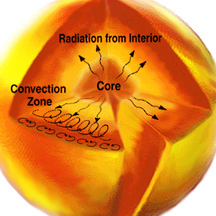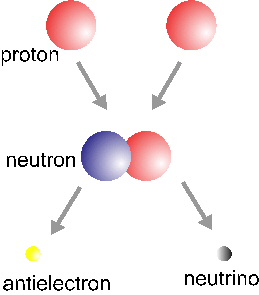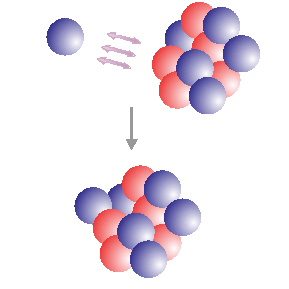Sunspots serve as markers that help us see the rotation of the Sun.
Images courtesy SOHO (ESA & NASA). Animation by Windows to the Universe staff (Randy Russell).
Rotation of the Sun
Text for this level has not been written yet.
Please see the "Intermediate" text for this page if you want to
learn about this topic.
To get to the "Intermediate" text, click on the blue "Intermediate" button
at the top of the page (between the "Beginner" and "Advanced" buttons).
(Note: If you cannot see the movie of the turning Sun on this page
you may need to download the latest QuickTime player.)
You might also be interested in:

Text for this level has not been written yet. Please see the "Intermediate" text for this page if you want to learn about this topic. To get to the "Intermediate" text, click on the blue "Intermediate"
...more
The Sun acts like it has a big magnet in the middle of it. We call this the Sun's magnetic field. The Sun's magnetic field has a fancier name, the Interplanetary Magnetic Field (IMF). This just means that
...more
In the basic Hydrogen fusion cycle, four Hydrogen nuclei come together to make a Helium nucleus. This is the simple version of the story. There are actually electrons, neutrinos and photons involved in
...more
Fusion in the core of stars is reached when the density and temperature are high enough. There are different fusion cycles that happen in different phases of the life of a star. These different cycles
...more
Neutron capture can occur when a neutron approaches a nucleus close enough for nuclear forces to be effective. The neutron is captured and forms a heavier isotope of the capturing element. When the new
...more
A Supernova is a very massive star that explodes at the end of its life. The supernova is where the heavy elements (heavier than iron) are made.
...more
The center of an atom is called the nucleus. Nuclei is the plural of nucleus. When two atoms come together, and their nuclei combine, you have fusion. Fusion releases energy. By using Einstein's famous
...more
The theory of relativity states that no particle can travel at the speed of light in a vacuum. However, light travels at lower speeds in dense media, like water. A particle traveling in water must have
...more














